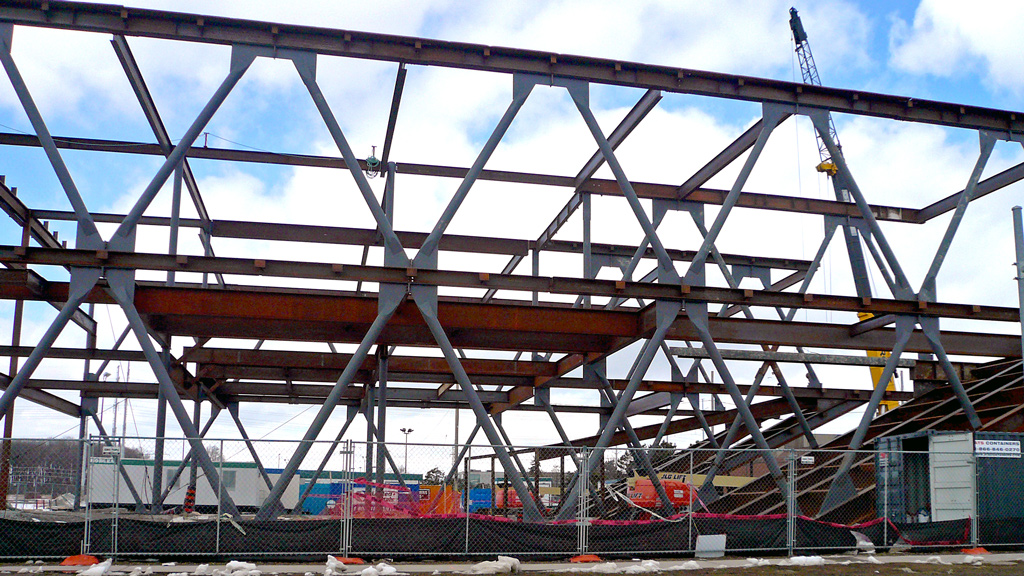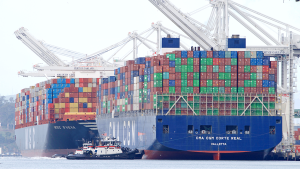Steel prices in the construction sector have risen so sharply and delivery has become so unreliable that members of the Ontario Structural Steel Fabricators Association (OSSFA) are taking the unusual step of reaching out to their customers in a plea for understanding.
OSSFA executive director Gord Rados reported in early February that such products as wide flange and plate have increased in price by about 80 per cent or more since last June and HSS tubing has more than doubled since June, including a hike of over 10 per cent since December.
Meanwhile, Rados said, some mills are no longer issuing price guarantees, a departure from the typical practice of guaranteeing prices on firm orders for 30 days, meaning some fabricators are seeing up to three or four price increases over the six to eight weeks it takes to get the steel rolled and landed at the warehouse yard.
That’s six to eight weeks’ delivery from order dates, when it used to be two or three weeks.
“This is a whole other dimension,” said Rados. “We’ve had spikes occasionally, but we still got guarantees from mills on honouring our prices. This situation has only maybe happened twice in the last 20 years, and then literally for only a few weeks.”
OSSFA members buy raw steel and fabricate products that are sold to the construction industry. Most OSSFA-member fabricators in Ontario buy steel from warehouses who are acting as middlemen, buying steel from mills in large orders and then selling it to each fabricator as they need it, Rados explained. Some larger fabricators buy directly from mills.
OSSFA members are having difficult discussions with their construction clients these days, said Rados, and he has been active advocating on their behalf in recent weeks explaining why there is such a crunch in the supply chain.
And nobody knows how long the problem will last, he said — the problems could continue for a half year or more, the industry is saying, with Canadian and international manufacturers all affected.
The root problem, said Rados, lies with commodity prices in general. Any slowdowns in production caused by COVID-19 are not a significant factor, analysts say.
“What’s happening, there is a need for steel globally. We’ve seen iron ore prices at historic levels. So what has happened is, offshore, where we used to buy quite a bit of our steel, a lot of that market is really thriving in its own locations, China, Europe, so we’re not getting as much of that here.”
Representatives of the Canadian Steel Producers Association and the Canadian Institute of Steel Construction declined to comment on the market situation.
A statement released by the OSSFA urged parties working on present construction projects to learn about the issues and adjust expectations as they look for ways to minimize negative impacts.
“At our members’ discretion, they may consider a general statement to their clients, such as: These steel material issues are beyond anyone’s control,” the statement said. “Due to these current market conditions, we are not able to quote firm pricing and all prices are subject to review at time of order and prior to shipment from mill. Any rolling dates are subject to change at a mill’s discretion and project delivery dates may need to be extended at no fault to the fabricator.”
Rados said members are presenting open books to buyers explaining costs. Some are attempting to insert cost-escalation clauses into contracts.
On a million-dollar contract, a cost increase of 10 per cent means $100,000 extra in costs — and Rados pointed out that often steel amounts to over 50 per cent of the total cost of a project.
“Our ultimate goal always is to please our clients and make sure we deliver to their expectations, but when there’s these realities before us, we have to at least tell everyone what’s happening,” said Rados.
The approach earned praise from construction lawyer Annik Forristal, a partner with McMillan. Asked to comment on approaches fabricators could take, she wrote, “As with any unanticipated event beyond the parties’ control, we strongly encourage owners and clients to co-operate with their suppliers, fabricators and contractors to find solutions and minimize negative impacts to the project. Strict enforcement of contractual rights may get you a short-term gain, but too often at the price of long-term pain.”
Forristal also stressed the importance of timely communication during volatile market conditions.
“Not only is timely notice often a contractual requirement, but the sooner the parties can begin working together on a solution, the better,” she wrote.











Recent Comments
comments for this post are closed